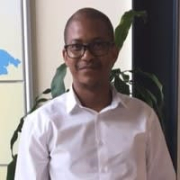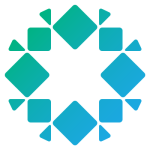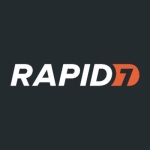What is our primary use case?
It's being used as our main backup and recovery product. We use it to back up virtual machine infrastructure, using VMware and/or Nutanix. We use it to back up our SQL, Exchange, and File Systems, where is a mixture of Linux, Windows and Solaris. We also use it to backup NFS and CIFs Shares under NetApp. We also use Commvault for Oracle Backup and/or RMAN Clones.
We migrated everything we had from other vendors to Commvault. About 95 percent of everything in our environment, is being backup by Commvault.
On-Prem, Cloud, Data Centers.
How has it helped my organization?
The disaster recovery features of Commvault have improved the way we operate. In the past, we had a very complicated process for testing disaster recovery. That kind of testing is one of the nice features of Commvault. You are completely sure that your data resides in multiple locations at the same time and you can be sure Disaster recovery Data it's there in case you need it.
HyperScale X also helps our admins to minimize the time they spend on backup tasks so that they can spend time on other projects. We are a big company and we have at least 80 locations using Commvault. We have admins for it in four or five regions on different continents. Overall, I would estimate HyperScale X has improved our productivity by 30 to 35 percent. We are more productive using Commvault than with other backup software.
It has also helped to reduce storage costs. We chose the solution because it decreases the backup costs for our end-users. We have been able to reduce backup costs by at least 50 percent.
What is most valuable?
There are a number of features we like HyperScale X:
- The deduplication is pretty good.
- We also like the ability to generate reports using the Command Center feature.
- We like how the software upgrade process works.
- From the start, the disaster recovery for the CommServe has been very robust and flexible and works pretty well.
- It also provides us with protection from ransomware, by default for Windows, and it can be enabled for Linux as well.
- Replication and Auxiliary Copy features, like dynamic throttling, are helpful.
- There is also the flexibility to create self-service capabilities for end-users and to give them access to restore their managed servers for data.
In addition, HyperScale X provides a single platform to move, manage, and recover data across all locations in our environment. The CommServe is the brain of Commvault. It's the server where the index and the cache are stored for the backups that are happening in the environment. All the management is centralized from that CommServe server. You can manage all the clients and all the infrastructure using one interface and one server. For redundancy, you have a disaster recovery CommServe server in standby mode. You can configure a disaster recovery backup to happen every 15 minutes.
Using the Commvault interface, you can customize and generate multiple reports to easily see what is protected and what is not protected in the environment. There is also a third-party feature called Commvault Activate. It's a separate product and you need another license to use it. That product specializes in discovering the environment, and the data in it, that you are not backing up.
What needs improvement?
You can manage everything from two interfaces. There is a Java console (CommCell), but in the near future that will be fully replaced by the Command Center, the HTML5 interface. The Java interface is not great. The Command Center interface is far better and it looks nicer, but it doesn't have all the powerful features available in the Java console. The place to improve the product is on the management interface level because that's the point where it's not perfect.
Today, to manage the product, you just have to use both interfaces. The Java interface is basically for the admin because it has all the powerful features in it. The HTML5 interface is mainly used by end-users, and by admins when they just need to generate a report or see something graphically to help with the management of Commvault.
One other note. I would rate the ransomware feature at about eight out of 10. There are different processes for enabling ransomware protection on Windows versus Linux systems. In the current version, there is no ransomware for HyperScale X. That feature has been released in CV SP 24.
Buyer's Guide
Commvault Cloud
October 2025
Learn what your peers think about Commvault Cloud. Get advice and tips from experienced pros sharing their opinions. Updated: October 2025.
868,787 professionals have used our research since 2012.
For how long have I used the solution?
We have been using Commvault HyperScale 1.5 and HyperScale X for the last three and a half years.
What do I think about the stability of the solution?
It's pretty stable. We haven't had a major issue in the three-plus years we have had Commvault.
There were some issues in the first year, until we managed to acquire the skill sets and learned how the product should be used, including the best practices. But overall the environment is pretty stable.
We perform a disaster recovery test twice a year and the product is robust and resilient.
What do I think about the scalability of the solution?
The solution is pretty scalable. You can grow the environment. We have been using the same CommServe server for the solution for the three years that we have had Commvault, and we have just scaled and scaled the solution. We started with about 3,000 clients and now the number of clients has doubled or tripled.
HyperScale X, which was released one year ago, is more scalable than version 1.5. You can put more nodes in one cluster and, because of that, you can increase your overall storage.
We don't have the Commvault Activate solution. We are thinking about acquiring it in the near future to improve our environment. Our migration from other vendors to Commvault took between one and two years because our environment is so large. Right now we are fine-tuning the product and the processes around it. Perhaps we will use Commvault Activate starting next year. It will be in our scope.
How are customer service and support?
Support for the product is pretty responsive and pretty good compared to the other vendors. Commvault's support is far better than Dell EMC's support.
If you hit an issue or a bug, Commvault support is there. And it's pretty easy to solve something that support cannot handle, if it's a bug that needs to go to the Commvault developers. We have initiated sessions with their developers to solve an issue that was affecting the environment. Because support is responsive, you can solve almost everything.
And if you need a feature that is not available, Commvault developers are responsive there too. They usually integrate such requests within a few months, and after that it's available for use.
How would you rate customer service and support?
Which solution did I use previously and why did I switch?
In the past, we used Dell EMC NetWorker and Dell EMC Avamar. The main reasons we switched to Commvault were the storage and backup costs. We wanted to find a cheaper solution. In addition, we wanted a solution that we could manage using a single interface, versus the multiple interfaces that we had with Dell EMC. Third, we wanted something that was simpler to manage and that could perform disaster recovery much better, including disaster recovery testing. We also wanted the ability to upgrade agents and software in a centralized fashion. We have seen an improvement on all of these points with Commvault, as a replacement for Dell EMC.
How was the initial setup?
The initial setup process is pretty complex. I was involved with the product from phase one. There are multiple points where you need to configure the product to have it functioning well in your environment. It's a complex product. There is a lot of stuff to set up from scratch to have things working as expected.
The time for deployment depends on how much infrastructure there is and on how many media agents and VSAs you need to deploy in the environment. For the first deployment we did in our environment, it took us two or three days to finish all the settings. But we were new to Commvault and we needed some time to understand it and to familiarize ourselves with all the options. Today, if we need to deploy a remote, on-prem site, where there is one media agent and one VSA, where the requirement is to back up a small or a medium site, the whole process can be done in a few hours. We work with Commvault's professional services to automate some of the deployment steps using Commvault's workflows.
Initially, we had about six petabytes of data that had to be migrated from one environment to another. It was pretty complicated because we had to disable the backup in one place and enable and configure the backup in another place. The process was also complicated because we had to look at the remaining space, how many workloads we needed to migrate, and how much had been migrated. We had to create procedures and train operations.
Commvault was new to everybody in our environment. Everybody had to become familiar with it and with the new processes and procedures. We had been using another technology for five years. Today, everybody in our operations, in our engineering, and our managers, is familiar with the product. Now, because we know the processes, everything moves much faster than it did in the past.
What was our ROI?
We have decreased the cost of our backup infrastructure using Commvault, by 30 to 35 percent.
Also, using Commvault HyperScale X has taken us to new ground where we can offer self-service recoveries to our customers and give them access to whatever server they manage. The other plus is the automation that we can create with Commvault's workflows to decrease the time it takes for a site deployment. That also translates into money saved because instead of having one admin resource occupied for a day to deploy a site, we can deploy a site in five minutes.
What's my experience with pricing, setup cost, and licensing?
The pricing is far better than we had in the past. The license for Dell EMC was not too expensive, but the storage, given that Dell EMC is based on data domains, was pretty expensive.
Which other solutions did I evaluate?
We evaluated Veeam, as well as Dell EMC NetWorker and Avamar. Before we bought, we ran some try-and-buy and some PoCs in our environment, to see how the products handle things. We were convinced that Commvault is better and fits better than the old product, and we acquired Commvault.
The pros of Commvault are that you can manage everything from one console and the disaster recovery scenario functions much better than with Dell EMC NetWorker. Also, Dell EMC Avamar was specialized to back up VMware environments and NetWorker was specialized to do them all. We wanted a solution that could do all the backups that are required in our environment. Veeam was not able to handle all our backup scenarios. Veeam is very good on VMware backups, but you cannot do Oracle backups, SQL backups, or file system backups. We were looking for a solution that could fit all the backup requirements, operating systems, and appliances that we have in our environment. There are very few products that can cover all of them, few of them are: Dell EMC NetWorker and Commvault.
What other advice do I have?
Involve Commvault support from the start, at the implementation level, to be sure that you implement the infrastructure with best practices. What can happen is that, a year after you implement the infrastructure, you notice that your clusters have not been properly set up and it's too late to change anything. Use their support during the implementation. Have some sessions with them to understand the whole infrastructure and the whole process of deploying HyperScale X.
We made a mistake in our first implementation, three years ago (Hyperscale 1.5). The recommended number of nodes per cluster was six, but for some reason we added nine. Because of that, we had some issues. Don't make the same mistake. However, HyperScale X, released in the last year, is a little bit more scalable and more flexible. Clusters can exceed nine nodes and can be extended further (current limitations per cluster are around 5 PB).
If someone is buying Commvault today, they should try to buy HyperScale X. It's the next generation and has some advantages. It can help avoid issues with clusters, moving forward.
Overall, we have been impressed by the features of the solution and by the responsiveness of Commvault's support. We like the product and we feel we made a good decision in acquiring Commvault and working with them. We are pretty happy.
Disclosure: PeerSpot contacted the reviewer to collect the review and to validate authenticity. The reviewer was referred by the vendor, but the review is not subject to editing or approval by the vendor.



















